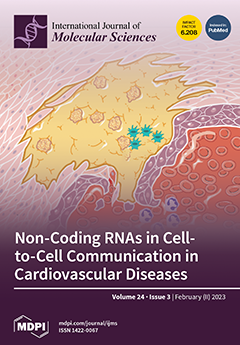Cold stress is a key environmental factor affecting plant growth and development, crop productivity, and geographic distribution. Thioredoxins (Trxs) are small proteins that are ubiquitously expressed in all organisms and implicated in several cellular processes, including redox reactions. However, their role in the regulation of cold stress in the halophyte plant
Lobularia maritima remains unknown. We recently showed that overexpression of
LmTrxh2, which is the gene that encodes the h-type Trx protein previously isolated from
L. maritima, led to an enhanced tolerance to salt and osmotic stress in transgenic tobacco. This study functionally characterized the
LmTrxh2 gene via its overexpression in tobacco and explored its cold tolerance mechanisms. Results of the RT-qPCR and western blot analyses indicated differential temporal and spatial regulation of
LmTrxh2 in
L. maritima under cold stress at 4 °C.
LmTrxh2 overexpression enhanced the cold tolerance of transgenic tobacco, as evidenced by increased germination rate, fresh weight and catalase (CAT), superoxide dismutase (SOD) and peroxidase (POD) activities; reduced malondialdehyde levels, membrane leakage, superoxide anion (O
2−), and hydrogen peroxide (H
2O
2) levels; and higher retention of chlorophyll than in non-transgenic plants (NT). Furthermore, the transcript levels of reactive oxygen species (ROS)-related genes (
NtSOD and
NtCAT1), stress-responsive late embryogenis abundant protein 5 (
NtLEA5), early response to dehydration 10C (
NtERD10C), DRE-binding proteins 1A (
NtDREB1A), and cold-responsive (
COR) genes (
NtCOR15A,
NtCOR47, and
NtKIN1) were upregulated in transgenic lines compared with those in NT plants under cold stress, indicating that
LmTrxh2 conferred cold stress tolerance by enhancing the ROS scavenging ability of plants, thus enabling them to maintain membrane integrity. These results suggest that
LmTrxh2 promotes cold tolerance in tobacco and provide new insight into the improvement of cold-stress resistance to cold stress in non-halophyte plants and crops.
Full article






